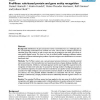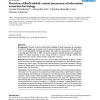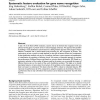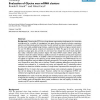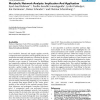BMCBI
2005
14 years 3 months ago
2005
Background: Identification of gene and protein names in biomedical text is a challenging task as the corresponding nomenclature has evolved over time. This has led to multiple syn...
BMCBI
2005
14 years 3 months ago
2005
BMCBI
2005
14 years 3 months ago
2005
BMCBI
2005
14 years 3 months ago
2005
In task 1A of the BioCreAtIvE evaluation, systems had to be devised that recognize words and phrases forming gene or protein names in natural language sentences. We approach this ...
BMCBI
2005
14 years 3 months ago
2005
Background: Clustering the ESTs from a large dataset representing a single species is a convenient starting point for a number of investigations into gene discovery, genome evolut...
BMCBI
2005
14 years 3 months ago
2005
Background: Secondary structure is used in hierarchical classification of protein structures, identification of protein features, such as helix caps and loops, for fold recognitio...
BMCBI
2005
14 years 3 months ago
2005
Background: The continuous flow of EST data remains one of the richest sources for discoveries in modern biology. The first step in EST data mining is usually associated with EST ...
BMCBI
2005
14 years 3 months ago
2005
Motivation: In cluster analysis, the validity of specific solutions, algorithms, and procedures present significant challenges because there is no null hypothesis to test and no &...
BMCBI
2005
14 years 3 months ago
2005
BMCBI
2005
14 years 3 months ago
2005
Background: In expressed sequence tag (EST) sequencing, we are often interested in how many genes we can capture in an EST sample of a targeted size. This information provides ins...
